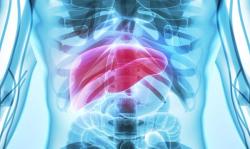
OR WAIT null SECS
In Food Allergy, Exposure to Store-Bought Peanut Butter Bests Avoidance Strategies
Data from the CAFETERIA trial provide insight into exposure vs avoidance strategies for high-threshold peanut allergy.
Results of the CAFETERIA trial suggest gradually escalating exposure to store-bought peanut butter could help desensitize children with peanut allergy, with this effect apparent even after discontinuing the treatment approach.1
A trial of 73 children aged 4 to 14 years old lasting 18 months, results of the National Institutes of Health-funded research indicate those who consumed gradually increasing doses of store-bought peanut butter achieved greater and long-lasting rates of desensitization than their counterparts who avoided peanuts.1
“Our findings open the gateway to personalized threshold-based treatments of food allergy and will encourage additional studies that delve deeper into peanut and other foods for this approach that might be a game-changer for the majority of people with food allergies,” said lead investigator Scott Sicherer, MD, director of the Elliot and Roslyn Jaffe Food Allergy Institute at Mount Sinai Kravis Children’s Hospital and chief of the Division of Allergy and Immunology in Mount Sinai’s Department of Pediatrics.2
In recent years, the advent of new therapeutic approaches, including oral immunotherapy, have transformed the management of food allergy for many. However, as investigators note, pivotal trials supporting the approval of oral immunotherapies, such as peanut allergen powder-dnfp (Palforzia) and omalizumab (Xolair) were conducted among patient populations with low tolerance to food allergens.1,2,3
For inclusion in the CAFETERIA trial, patients were required to be able to ingest at least 443 mg of peanut protein but less than 5043 mg. In contrast, the omalizumab pivotal trial had a maximum tolerance to peanut protein of 100 mg or less. The POSEIDON trial of peanut allergen powder-dnfp had a tolerance range of more than 3 mg to 300 mg or less and the PALISADE trial had a required tolerance of 100 mg or less.1,4,5,6
“The research team recognized that more than half of people with peanut allergy can tolerate half a peanut or more, and thought that this group of people might be treatable if we took a different approach to peanut oral immunotherapy. We were thrilled to find that this treatment strategy was even more successful than we had anticipated,” said co-senior investigator Julie Wang, MD, professor of Pediatrics at the Icahn School of Medicine, clinical researcher at the Jaffe Food Allergy Institute.2
In the CAFETERIA trial, 73 children aged 4 to 14 years old were randomized in a 1:1 to peanut oral immunotherapy using home-measured peanut butter or peanut avoidance. A total of 38 participants were randomized to the exposure group and 35 were randomized to the avoidance group. According to parent/guardian reporting, approximately 60% of the cohort was white, 19% were Asian, 1.4% were Black, and 22% were more than 1 race.1
The primary outcome of interest was the difference between the treatment and avoidance groups in the percentage of children who tolerate a dose at least 2 steps greater than baseline or 9043 mg of peanut protein. Among those tolerating 9043 mg, a secondary analysis was performed to assess sustained unresponsiveness after 16 weeks of ad-lib ingestion followed by 8 weeks of abstinence.1
Per trial protocol, all dose increases were performed under medical supervision.1
Investigators highlighted there were 0 severe reactions among the peanut ingestion group during the study. Additionally, investigators also highlighted 0 participants from the peanut-ingestion group had severe reactions or needed epinephrine during home dosing and only one received epinephrine during a supervised dosing visit.1
At the conclusion of the study, 84.2% of the peanut exposure group and 85.7% of the avoidance group participated in the primary outcome food challenge. The primary analysis revealed a 100% success rate for ingestion versus 21.0% for avoidance, with a between-group difference of 79.0 percentage points (95% CI, 64. To 93.5; P <.001). All 32 treated participants and 10% of peanut avoiders tolerated the 9043 mg test. In the intention-to-treat analysis, sustained unresponsiveness was observed in 68.4% of the ingestion group compared to just 8.6% of the avoidance group (between-group difference, 59.9 percentage points; 95% CI, 42.4 to 77.3).1
“Children with high-threshold peanut allergy couldn’t participate in previous food allergy treatment trials, leaving them without opportunities to explore treatment options,” said Jeanne Marrazzo, MD, MPH, director of the National Institute of Allergy and Infectious Diseases. “Today’s report focuses on this population and shows that a very safe and accessible form of therapy could be liberating for many of these children and their families.”
References:
Sicherer SH, Bunyavanich S, Berin MC, et al. Peanut Oral Immunotherapy in Children with High-Threshold Peanut Allergy. NEJM Evid. Published online February 10, 2025. doi:10.1056/EVIDoa2400306
Mount Sinai Health System. Eating gradually increasing doses of store-bought peanut butter enables children with high-threshold allergy to safely consume peanuts. Mount Sinai Health System. February 10, 2025. Accessed February 10, 2025. https://www.mountsinai.org/about/newsroom/2025/eating-gradually-increasing-doses-of-store-bought-peanut-butter-enables-children-with-high-threshold-allergy-to-safely-consume-peanuts.
National Institutes of Health. Therapy helps peanut-allergic kids tolerate tablespoons of peanut butter. National Institutes of Health. February 10, 2025. Accessed February 10, 2025. https://www.nih.gov/news-events/news-releases/therapy-helps-peanut-allergic-kids-tolerate-tablespoons-peanut-butter.
Wood RA, Togias A, Sicherer SH, et al. Omalizumab for the Treatment of Multiple Food Allergies. N Engl J Med. 2024;390(10):889-899. doi:10.1056/NEJMoa2312382
Du Toit G, Brown KR, Vereda A, et al. Oral Immunotherapy for Peanut Allergy in Children 1 to Less Than 4 Years of Age. NEJM Evid. 2023;2(11):EVIDoa2300145. doi:10.1056/EVIDoa2300145
PALISADE Group of Clinical Investigators, Vickery BP, Vereda A, et al. AR101 Oral Immunotherapy for Peanut Allergy. N Engl J Med. 2018;379(21):1991-2001. doi:10.1056/NEJMoa1812856


